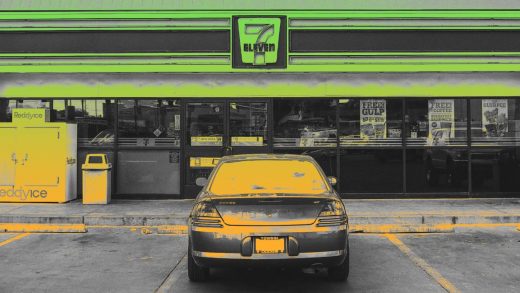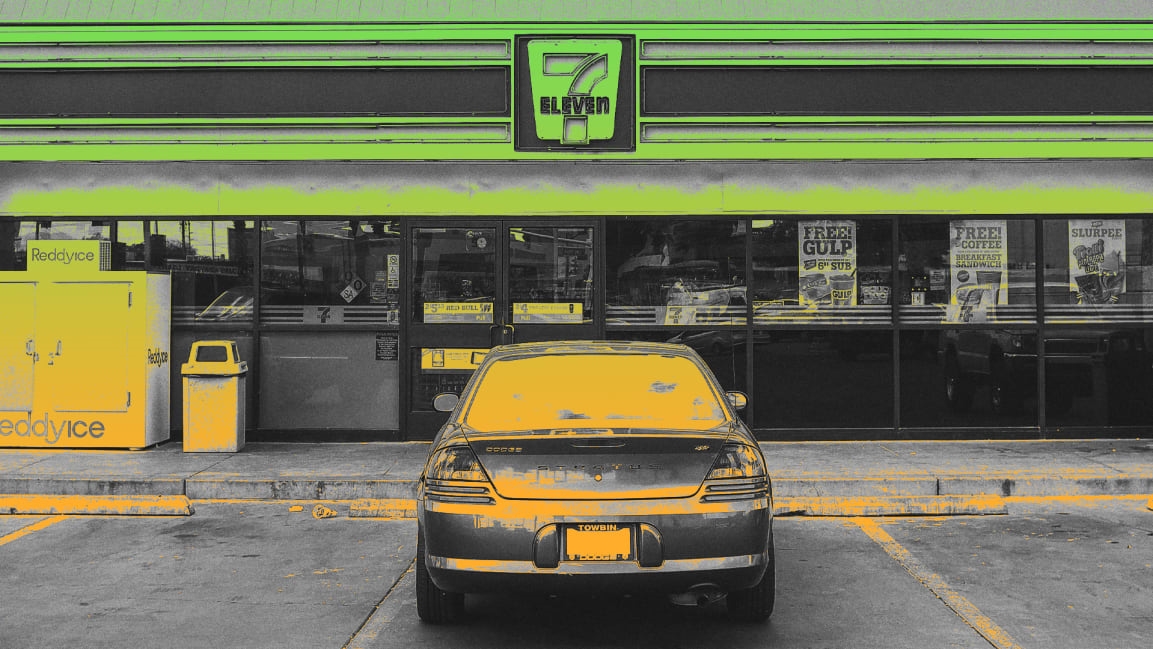How convenience store chains such as Circle K and 7-Eleven are morphing in the COVID-19 era
Circle K is opening what’s believed to be the world’s first convenience store retrofitted with AI technology for autonomous checkout in Tempe, Arizona, the company announced this morning.
The chain is partnering with San Francisco-based Standard to equip the location with 80 to 100 ceiling cameras that record which products customers who sign in with the app take off the shelves.
“In light of COVID, this is the kind of experience people will like even more,” says Magnus Tägtström, head of global digital innovation at Circle K’s parent company, Alimentation Couche-Tard. “If you don’t want to, you don’t have to interact with anyone. You could just walk in, grab what you want, and walk out. That resonated very much with social distancing and a low-touch environment.”
According to the most recent industrywide data from the National Association of Convenience Stores, traffic during this year’s weekday morning rush, 7 a.m. to 9:59 a.m, is 85% of what it was last year, and lunchtime traffic, 11 a.m. to 2:59 p.m., is 88%.
“Can’t let the well run dry”
In the coronavirus era, many so-called convenience stores have become anything but. Gone are the office workers looking for quick afternoon snacks or in need of aspirin. Commuters, now a rare breed, aren’t stopping in to grab milk, ant traps, or bags of ice on their way. People are filling up with gas less frequently, which means fewer trips to the small stores amid a sea of pumps.
Convenience now is a handful of pretzels from a large bag in your kitchen, as you crumb your way to the desk in your bedroom. Impulse buys have been replaced by carefully planned trips to supermarkets and big-box retailers for everything from six-packs to detergent to shelf paper, as COVID-fearful shoppers choose to venture out as little as possible.
“[Stores] can’t let the well run dry,” says Dave Aron, a professor of marketing at Dominican University in River Forest, Illinois, and a convenience store expert. “You have to keep the revenue coming in. If it takes radical changes to keep customers coming, you have to bear the expenses. Because margins tend to be so low in fast-moving retail like that, you do what you have to do.”
Chains also face a double threat from Amazon, whose online retail dominance has only become more prominent during the pandemic and whose autonomous checkout tech, most notably in its Amazon Go stores, could keep pushing physical retail toward automation.
Mergers, drive-throughs, and delivery
Circle K isn’t the only convenience chain making changes. Last week, 7-Eleven’s parent company announced it was buying Speedway for $21 billion. The week before that, Wawa revealed plans for its first-ever freestanding drive-through, which will be built in suburban Philadelphia. In April, DoorDash started delivering from more than 1,800 convenience stores across the country, such as 7-Eleven, Wawa, Casey’s General Store, and Circle K, and last week, it launched DashMart in a number of cities.
“These kinds of moves that would’ve happened at some point are being accelerated,” Aron says. “You still need to rely on a lot of churn and separate smaller purchases.”
There’s a bit of good news from the National Association of Convenience Stores, too: When they do make one of their less-frequent trips, convenience store shoppers are spending about 20% more than they did in 2019.
One advantage convenience stores have is their size, according to Aron. Some shoppers have developed a COVID-19-fueled agoraphobia that makes them want to avoid large stores with many people, not all of them masked and practicing social distancing. In a 1,000- to 3,000-square-foot space, nervous consumers can check for rule-breakers—and avoid them more easily.
“It is critical to provide new ways to access Wawa, increase convenience, and provide new options for service,” Terri Micklin, Wawa’s director of construction, said when the drive-through strategy was unveiled. “We are hoping to learn from the layout, workflow, and traffic flow at this location, as we continue to explore alternatives for longer-term application to our stores post-COVID-19.”
(23)



